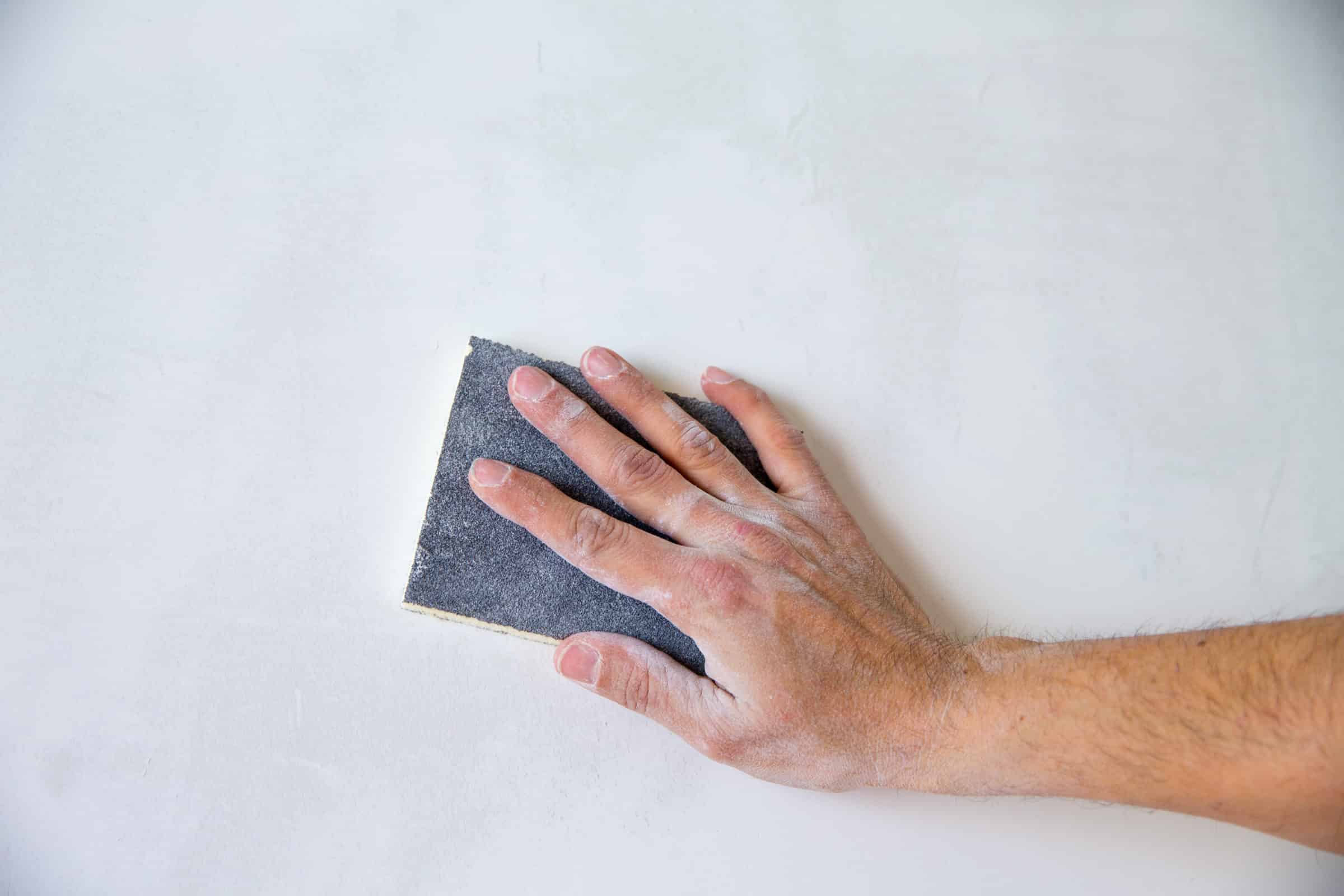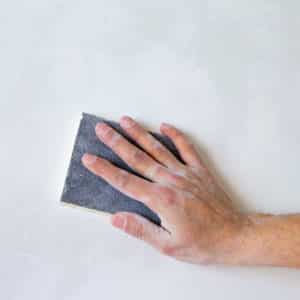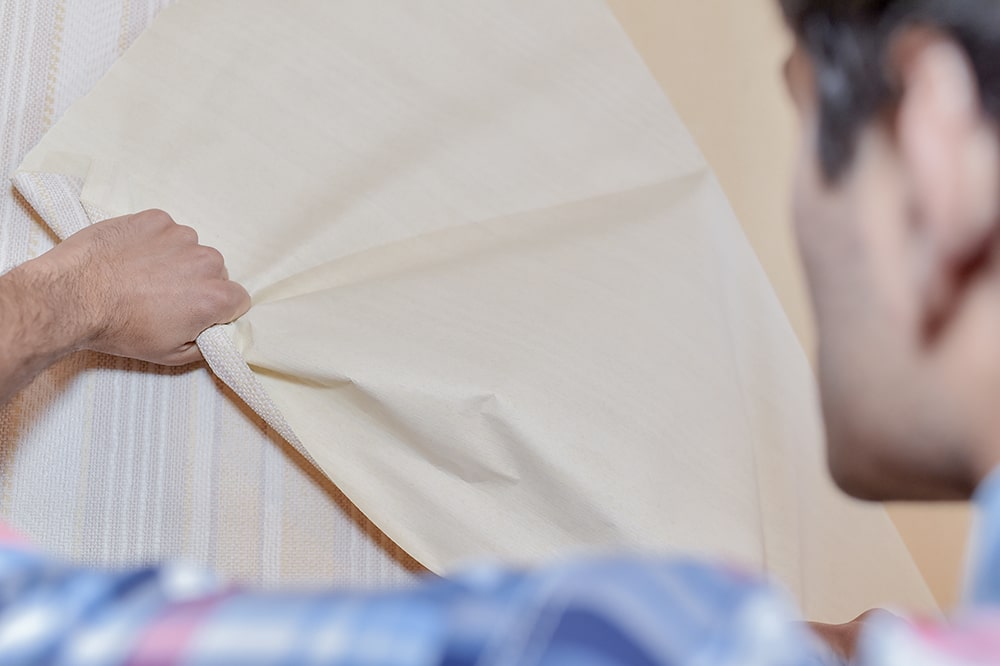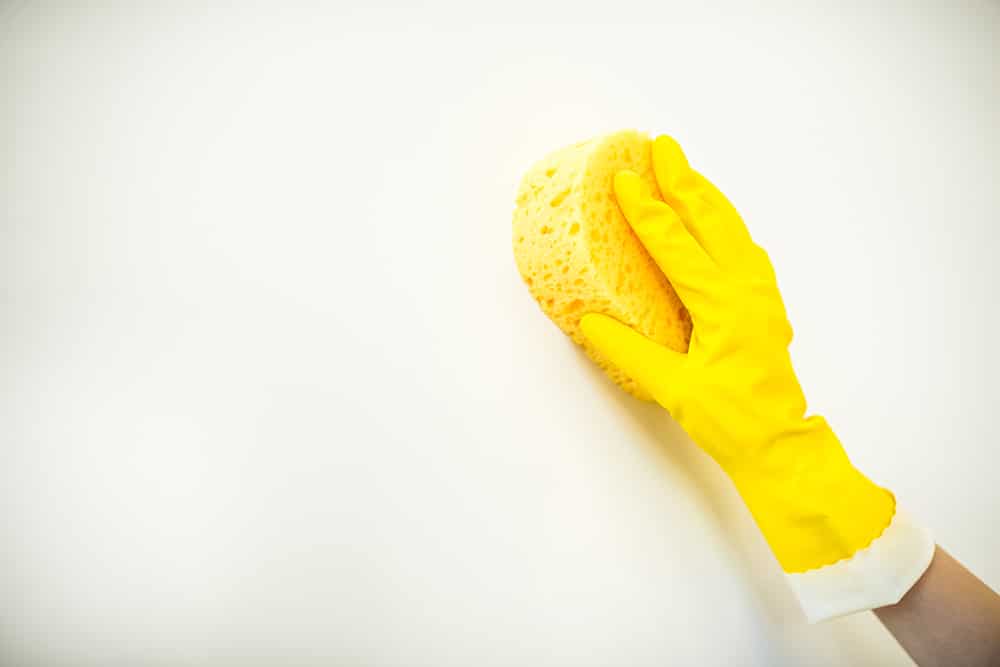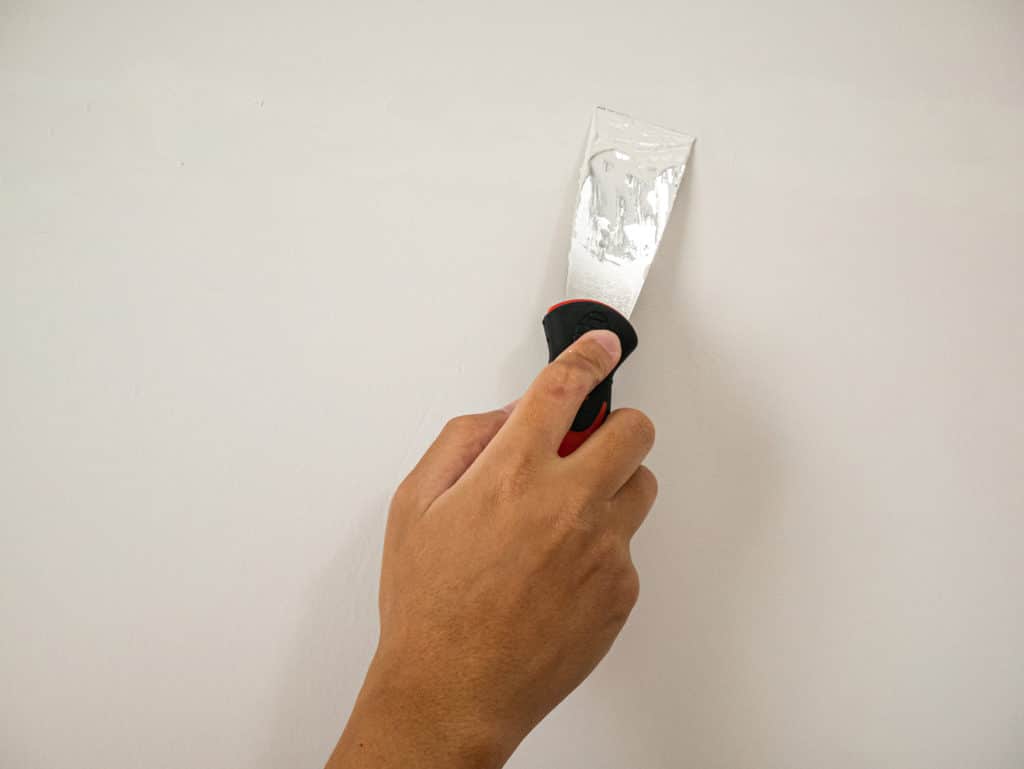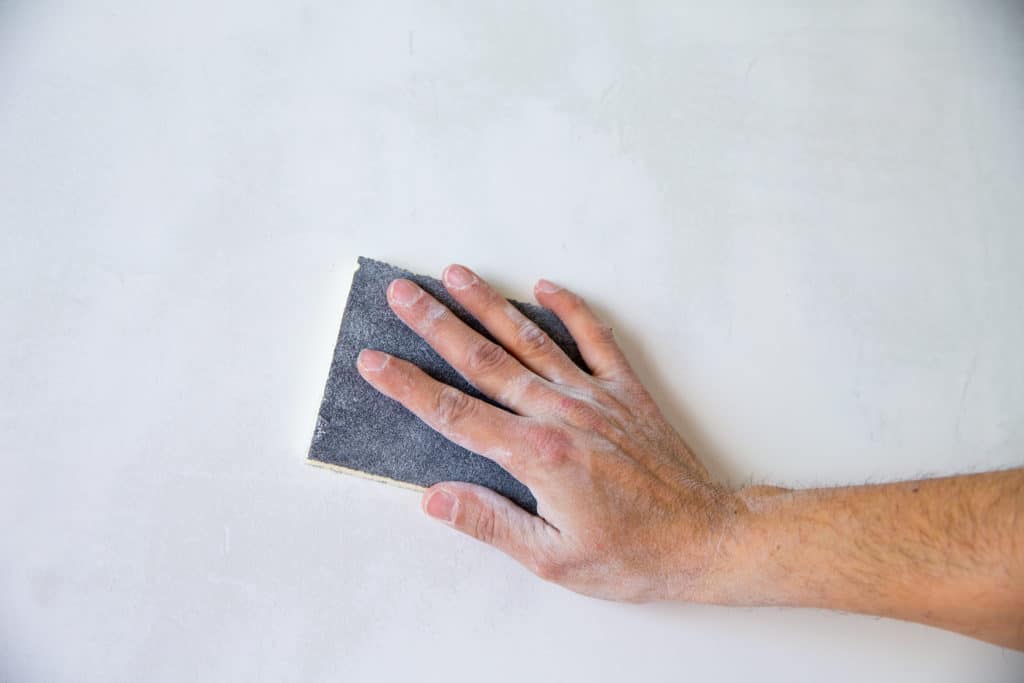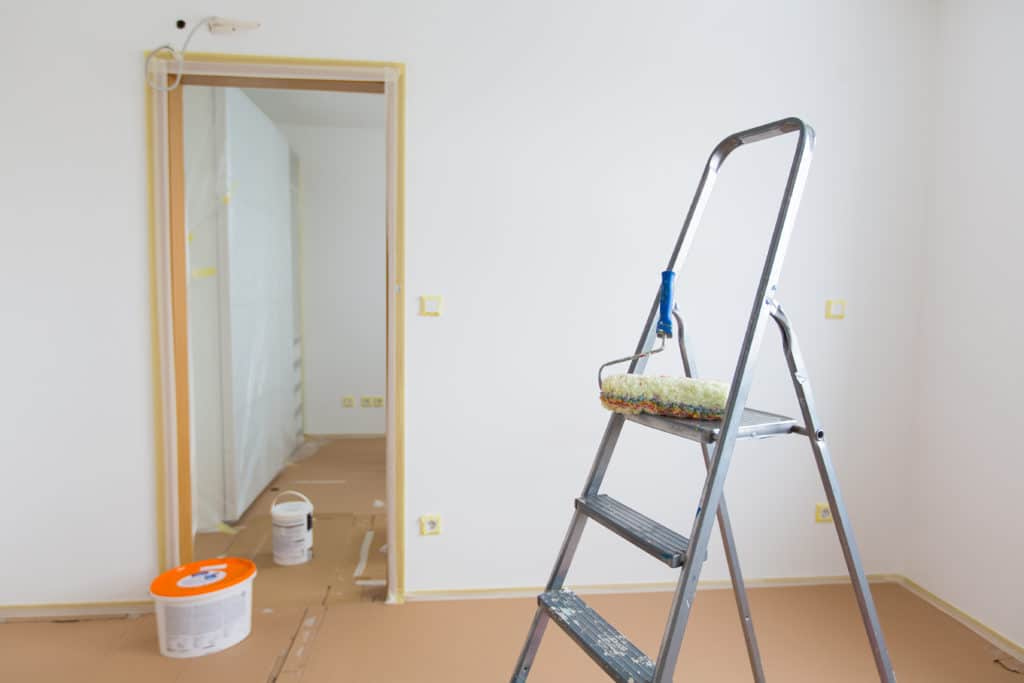A motto we like to live by is ‘preparation is key’. Behind every good paint job is good prep work.
Today, we are going to share our 5 top tips on how to prep walls for painting.
1) Wallpaper removal
If you first need to remove wallpaper before painting walls, there’s a few ways in which you can do so. One way is to use a steamer and another is to use a wallpaper removing solution. This is sprayed onto the surface, left for a certain amount of time and then you can simply remove the paper.
The option you choose will depend on what you are more comfortable with but also the state of the wallpaper. You may well find that if the wallpaper has been on the wall for many, many years, it may come away with very little effort. However, if it was adhered with a particularly strong paste, it may be incredibly difficult.
Once the paper has been removed, make sure to remove wallpaper paste residue on the walls. If there is any left behind, you will find that the paint will not apply smoothly and will result in an undesirable finish.
The easiest way to remove wallpaper paste residue is to use dish soap and hot water. However, if the glue is extremely stubborn, you could try using vinegar and hot water. The use of a plastic scraper will help to help shift the glue, but do be cautious not to gouge into the wall!
Unfortunately, it is sometimes the case that when you remove wallpaper, you’ll discover some horrors below. If this happens you may need to consider re-skimming the walls. If you think this is necessary, we’d recommend getting a professional to advise you further.
2) Washing your walls
Although this might seem an odd thing to do considering you will be painting over anything that is there, you will find that paint adheres better if you clean your walls first. This is especially the case in areas where grease and grime might build up, such as in kitchens and bathrooms.
All you need to do is simply add a little detergent to some clean, fresh water and give the surface a light wipe down. Don’t go overboard and make the wall too wet though, as this will affect the drying time and could potentially cause damage to the wall.
At this point, we would also recommend dealing with any mould or mildew that may be present on the wall. Use a mould killer before painting and, if necessary, a mould preventing paint additive.
3) Fill in holes or cracks
We’re fairly sure this is ‘How to prep walls for painting 101’ – fill in any holes or cracks before painting! Doing this will give a smooth and professional-looking finish. However, if there are any cracks that seem to follow up the wall to the ceiling, you may wish to investigate further before you begin as there may be an underlying issue.
Depending on how big the hole is and on the type of surface, will depend on what product/s you will require. Some products are alcohol based and quick-drying whilst others take quite some time to dry – potentially hours or even days. This is something to take into consideration when deciding which one is right for you and your wall.
4) Sand your walls
Once you have filled any holes or cracks in your walls, you will want to sand the filler down to make for a smooth finish in line with the rest of the wall. We recommend that you start with coarse sandpaper and then slowly work your way towards a lighter sandpaper as you get close to the finished result.
Do be careful not to get carried away and remove too much though as you will be right back to square one!
We recommend giving your walls a light sanding before painting – even if you have not filled in your walls. This will ensure that the entire surface is smooth and uniform and will allow for a neat and professional-looking finish.
Don’t use anything too coarse though, just a very light sanding to get rid of any small imperfections.
5) Tape around door frames etc.
Now that your walls are clean and smooth you may think you are ready to go! However, before you do, we recommend you tape around any surface that you do not want to paint. Protecting areas such as door and window frames, window sills, flooring, plug sockets etc. will ensure for a much more professional-looking finish.
There are a huge range of tapes on the market, with some made for specific surfaces and other with only a very light adhesive. Do make sure that you read the packaging properly and purchase tape that is suitable for what you will be applying it to.
We also recommend a mid range priced tape. Sometimes the ultra cheap tapes are cheap for a reason and you may find yourself having to scrape it off the surface after!
If you have any further tips or advice on how to prep walls for painting, please leave them in the comments below! We love hearing from you!
For more handy tips and advice, why not follow us on our social media pages? We are on Facebook and Instagram where you can find us at @owatroluk or by using the hashtag #owatroluk

